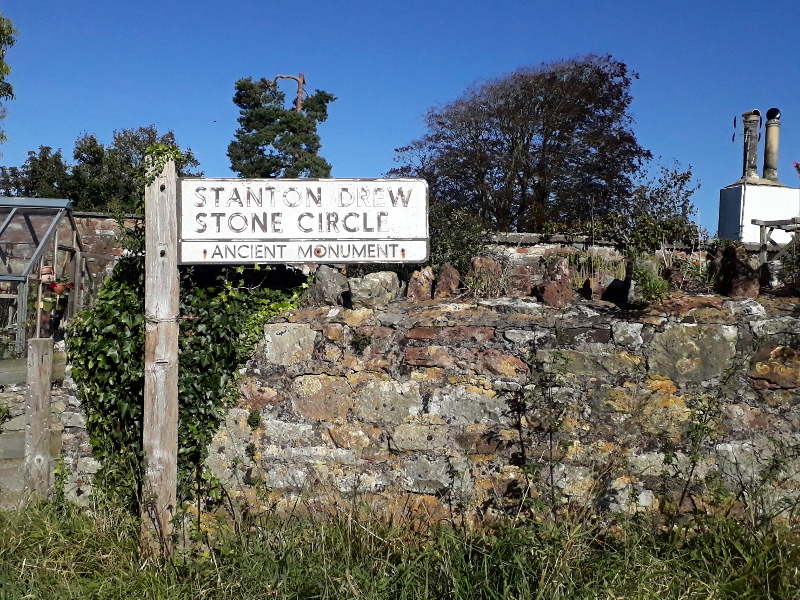Evidence of ritual activity
Neu, es i fwyta pysgod a sglodion
Sunday: a trip out to Stanton Drew stone circles. They are a mysterious and imposing group, relatively little-investigated and therefore with little certainty about them. The Great Circle, second in size only to Avebury, appears to be the remains of a complex henge monument containing multiple concentric circles of wooden posts and an avenue down to the nearby river: rather like Woodhenge, if you know it. The precise date or sequencing, though, is very unclear; it is almost certainly at least four thousand years old, possibly five thousand or more, a range of timescales which in the modern day would easily encompass both a medieval cathedral and the latest office blocks with a huge amount of room to spare.

We have no real way of knowing what sort of rituals were held here, just that some sort of ritual presumably was, and that over time it will have changed radically. To the last prehistoric people to carry out a religious act here, it might have said to have been immeasurably old, here before the start of the universe; or it might have said to have been built just beyond the touch of living memory, in their fathers’ mothers’ fathers’ time. What we do know is that in reality it may well have been in continuous use for fifty generations or more. In that time there may have been considerable change in language, belief and ritual, or it may have been relatively static. Modern reconstructions of the site, which you can see on the English Heritage website, show an almost-alien forest of posts, completely foreign when compared to any modern-day religious rituals or structures.
Of course, people still carry out religious rituals at Stanton Drew today. They have no real relationship with the religion the site was originally built for, but they do have a deep spiritual and emotional connection to the site itself, as we today see it: to the land, the landscape, and the goddesses and gods that the people of today call upon.
Walking around and exploring the site, we looped around two-thirds of the Great Circle and wandered over to the North-East Circle, much smaller and on a much more human scale. It, too, had its avenue down to the river, and may have had some sort of four-post structure in its centre. Today, at its centre, we found a dead crow. Wrapped in black silk and placed there carefully face-down.

We had no way to tell if it had been sacrificed deliberately, or had died a natural death. We had no way to tell who had placed it there, or why, other than that they clearly cared, that it clearly meant something, to place it directly in the centre of the smallest circle, its head facing north. “Insects will eat it and turn it into a skeleton,” said The Child Who Likes Animals, and, indeed, we could see small flies on its soft feathers already getting to work and returning it to the soil. We stood back respectfully and let it go on its way, just as the brambles still ripening in the hedge at the corner of the field will in a few weeks time wither up probably still on the plant.

And then, as it was barely even lunchtime, we headed off to the fish and chip restaurant at Chew Valley Lake to dine in style from cardboard boxes and with wooden forks.

Hurrah, even if the peas are a bit too fancy to be proper mushy peas.

 Home
Home